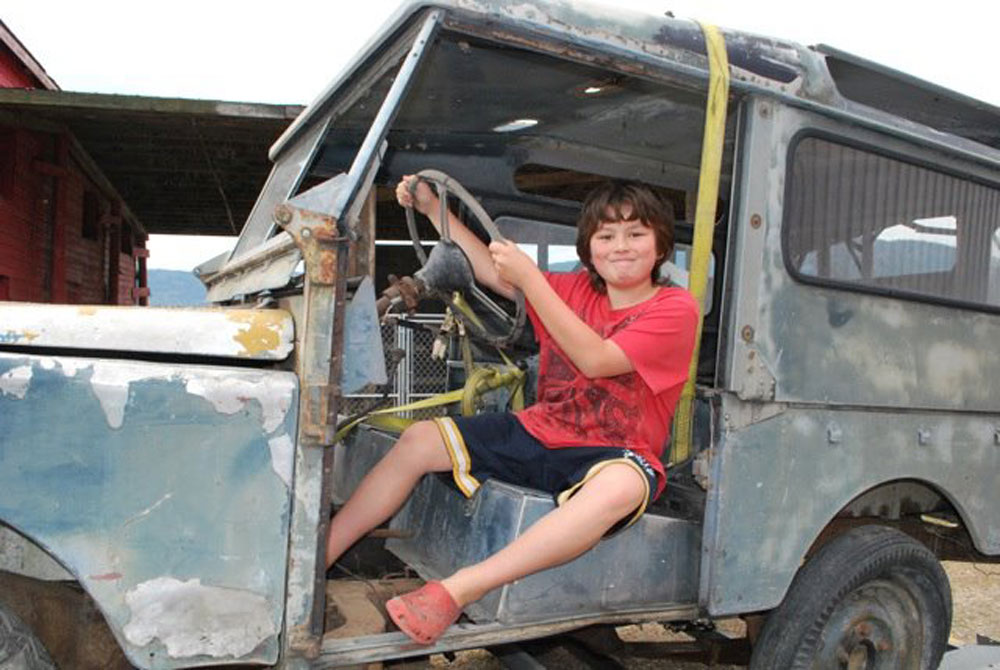“Free Series Land Rover”
That little classified ad on the website of my local Land Rover club has started what we hope to be one of our families’ biggest adventures. It was the summer of 2011 and I was looking for (yet another) project to work on with my 3 boys. We were too late to get the free truck, it was snapped up by another club member, but that ad set the hook, and the boys and I started trolling the web for used Series Rovers.
That Fall I came across an ad from Andy in Revelstoke BC. He was restoring an 80″ Rover, and had bought a few trucks in a lot-sale in an effort to get some parts. Most of the trucks he bought were 80″, but one of them was an 86″, and he had no use for it. The 86″ was only produced for a few years, but there are a fair number of them in Canada, mostly hard-tops and some pickups. This one appeared to be a hard-top. I called Andy, agreed on a price, and set off with my oldest son Liam and a u-haul trailer in tow. The truck was rough, very rough. But most of the main components were there. Engine, Gearbox, Transfer Case, Axles, Wheels, etc. It didn’t have any doors, the Safari-roof was missing, there was no interior, the front wings were crumpled and torn, the windows were mostly broken or missing, etc. etc. We winched it onto the trailer, put a strap over it to keep the roof from blowing off, and headed south, stopping to say hi to our friends Dave and Pam in Armstrong BC. Turns out that Dave had a bunch of Series 1 parts lying in his barn that would fit our new truck. So after a cup of coffee and some biscuits, we loaded a door-top, a bonnet, and a few other odds and ends onto the trailer, and continued our journey.
When we got home, the welcome from my wife was less enthusiastic than we were hoping. As much as we tried, she didn’t seem to have the same rosy vision of the truck as the boys and I. We started to dig a little deeper to find out what exactly we had bought.

Joining the Series One Club (LRSOC) forum in the UK was a big help. There we learned how to tell if our truck was an original station wagon (SW), or simply a hard-top. Many people simply bought a hard-top and bolted some seats into the back, since the price premium for a SW in 1954 was very high. The way to tell was to check a hidden section of aluminium (as opposed to the aluminum used in the US) in the back to see if there was an embossed-dent, or a hole. Ours had the dent, meaning it was in fact a factory-original wagon. This news generated some excitement on the LRSOC forum, as we were told that there were only two remaining ’54 wagons known to the Series One registry. Ours made it three.

Now that we knew we had a fairly rare truck, we decided to dig a little deeper into the historical significance of this particular model, and also to see how many, if any, of the components remaining on the truck were period-correct, since parts are often swapped between old Rovers, given their lego-like construction.
Next Installment: Inspiration from a famous expedition.


